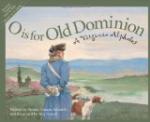It was in the fourth generation of the houses of Shirley and of Corotoman, and in the year 1723, that the families were united by the marriage of John, son of “King” Carter, and Elizabeth, daughter of the third Edward Hill. John Carter was a prominent man and the secretary of the colony; Elizabeth Hill was a beauty and the heiress of Shirley. In the descendants of this union the old plantation has remained to this day.
The first time that we went from our creek harbour up to Shirley was a strange time perhaps for people to be abroad in woods and field-roads. The day was one of struggle between fog and sun, neither being able to get his own way, but together making a wonderful world of it. We walked in a luminous mist; the road very plain beneath our feet, but leading always into nothingness, and reaching behind us such a little way as to barely include the tall, following, hazy figure that was Henry.
There was little for us to see, but that little was well worth seeing; only a tree or a clump of bushes or a hedge-row here and there, but all dimmed into new forms and graces for that day and for us.
As we neared a ridge of meadowland, a pastoral for a Schenck took shape in the fog cloud before us. Scattered groups of sheep appeared close at hand, and, faintly visible beyond them, a denser mass of moving white. No tree nor landmark was to be seen; just set into the soft whiteness, showing mistily, was the snowy flock itself. Sheep grazed in groups, the tan shaded slope in faint colouring beneath them. Here and there a mother turned her head to call back anxiously for the bleating lambkin lost behind the white curtain; and, dim and grotesque, the awkward strayling would come gamboling into sight. Near by on a little hillock, a single sheep stood with its head thrown up, a ghostly lookout. The hidden sun made the haze faintly luminous about this wandering flock of cloudland. We were not the first to move and to break the picture.
As we gained higher ground, a breeze was stirring and the fog was beginning to lift. When we reached the edge of the Shirley homestead and passed the turreted dove-cote, the near-by objects had grown quite distinct. But out on the river the fog yet lay dense; and two boats somewhere in the impenetrable whiteness were calling warningly to each other.
Now we went on toward the manor-house that loomed against a soft background of river fog.
The mansion is wholly unlike either Brandon or Westover, being a massive square building without wings. It is two and a half stories high, with a roof of modified mansard style pierced with many dormer windows. It has both a landward and a riverward front, and both alike. Each front has a large porch of two stories in Georgian design with Doric columns. The walls of the house are laid in Flemish bond, black glazed bricks alternating with the dull red ones. While both the roof and the porches are departures from the original lines of the house, yet they are departures that have themselves attained a dignified age of about a century and a quarter.




